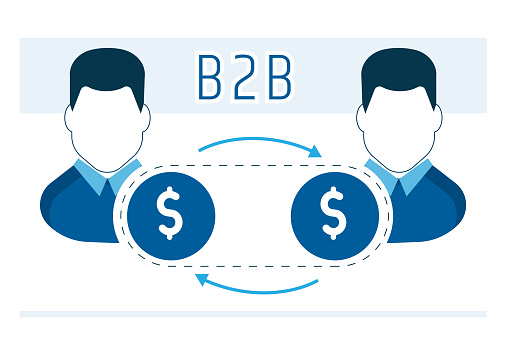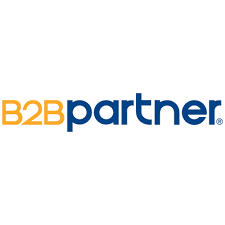
partnership marketplace https://www.partner2b.com/partner-marketplace
Partnership marketplace platforms are transforming how companies discover, engage, and scale collaborations. Unlike traditional marketplaces that match buyers and sellers, a partnership marketplace connects organizations, technology providers, service partners, and channel sellers into a structured ecosystem. The goal is not only to facilitate transactions but to generate mutual value through co-selling, co-marketing, integrations, referral programs, and joint solutions that amplify reach and revenue for all participants.
At its core, a successful partnership marketplace combines three essential layers: discovery, enablement, and monetization. Discovery means making it easy for potential partners to find one another, understand capabilities, and evaluate fit. Enablement involves equipping partners with the training, collateral, playbooks, and onboarding processes needed to sell and integrate effectively. Monetization defines how the platform captures value — through referral fees, subscription licensing, lead-sharing, performance-based commissions, or hybrid revenue models. Balancing these layers ensures both platform health and partner satisfaction.
One of the first strategic decisions in building a partnership marketplace is defining the partner types and the value proposition for each. Technology partners may prioritize API access, sandbox environments, and developer documentation. Channel partners and resellers look for margin-friendly pricing, sales enablement, and joint marketing resources. Service partners need project leads, certifications, and clear engagement models. Tailoring onboarding flows, certification tracks, and partner tiers to these segments increases adoption and improves partner retention.
Platform design should emphasize simplicity and transparency. A partner dashboard that centralizes leads, commission reports, integration status, and marketing assets reduces friction. Clear SLAs and well-defined lead routing rules prevent disputes and ensure predictable outcomes. Integrations with CRM systems, billing, and analytics platforms are essential to automate lead tracking, attribution, and payout calculations. The right technology stack converts manual coordination into scalable, measurable processes.
Governance and compliance are often overlooked but critical, especially when operating across multiple markets. Contracts, data protection policies, and tax considerations must be embedded into partner onboarding. Consider tiered agreements where higher-tier partners gain access to advanced benefits but also assume stricter performance and compliance obligations. Providing contractual templates and automated signature workflows can accelerate partnership activation.
Incentive design is the engine of a partnership marketplace. Different incentives work for different partner personas: recurring commissions for resellers, one-time referral fees for introducers, and milestone-based payouts for implementation partners. Publicly visible leaderboards, co-marketing funds, and joint events can stimulate competition and collaboration. However, incentives should align with long-term objectives — for example, incentivizing customer success and renewals rather than only initial sales helps reduce churn and strengthens partner relationships.

Marketing and co-selling strategies amplify the reach of a partnership marketplace. Co-branded content, joint webinars, localized campaigns, and success story case studies showcase real-world results and educate prospects. Enable partners to self-serve on collateral, customizable landing pages, and campaign templates to reduce the marketing burden on your team. Establish regular partner training sessions and certification renewals to keep knowledge current and maintain quality across the ecosystem.
Performance measurement keeps the marketplace healthy. Key metrics include number of active partners, partner-attributed revenue, average deal size, time-to-first-deal, activation rate after onboarding, partner churn, and lifetime value (LTV) by partner tier. Use cohort analysis to understand which partner segments drive the most sustained value and invest preferentially in their growth. Attribution models must be robust to handle multi-touch journeys and multi-partner involvement.
Trust and community are differentiators. A partnership marketplace that fosters community through forums, partner advisory boards, and local meetup events increases engagement and loyalty. Encourage partners to share best practices and co-create resources; this not only scales enablement but also surfaces innovative go-to-market approaches. Transparent communication and a feedback loop where partner input influences the platform roadmap build deeper alignment.
Scalability considerations extend to both people and processes. Automate routine tasks like certification issuance, commission calculation, and referral handling. Scale partner support with tiered help systems and dedicated partner success managers for top-performing partners. Standardize documentation and use templates for common partnership agreements to reduce legal bottlenecks. As the number of partners grows, governance mechanisms such as partner scorecards and automated compliance checks help maintain quality without manual oversight.
There are common pitfalls to avoid. Overcomplicating the onboarding process, promising benefits you can’t sustain, or failing to measure partner-driven impact can all undermine momentum. Equally damaging is a one-size-fits-all approach: partners expect tailored experiences that match their business models and incentives. Finally, don’t neglect the provider side — the platform must consistently deliver leads and value to keep partners engaged.
Successful marketplace examples share traits: clear value exchange, low-friction onboarding, measurable incentives, robust enablement, and continuous community engagement. Whether you’re launching a partner ecosystem for a SaaS product, an API platform, or a services marketplace, prioritize partner experience as much as customer experience. A partnership marketplace that puts structured enablement and mutual success at the center becomes a force multiplier for growth.
In conclusion, building a partnership marketplace is both a strategic and operational endeavor. Define partner segments and incentives carefully, invest in technology and automation for scalable operations, measure the right KPIs, and foster a community that cultivates trust. With thoughtful design and relentless focus on partner value, a partnership marketplace can unlock new channels, accelerate product adoption, and create sustained competitive advantage.